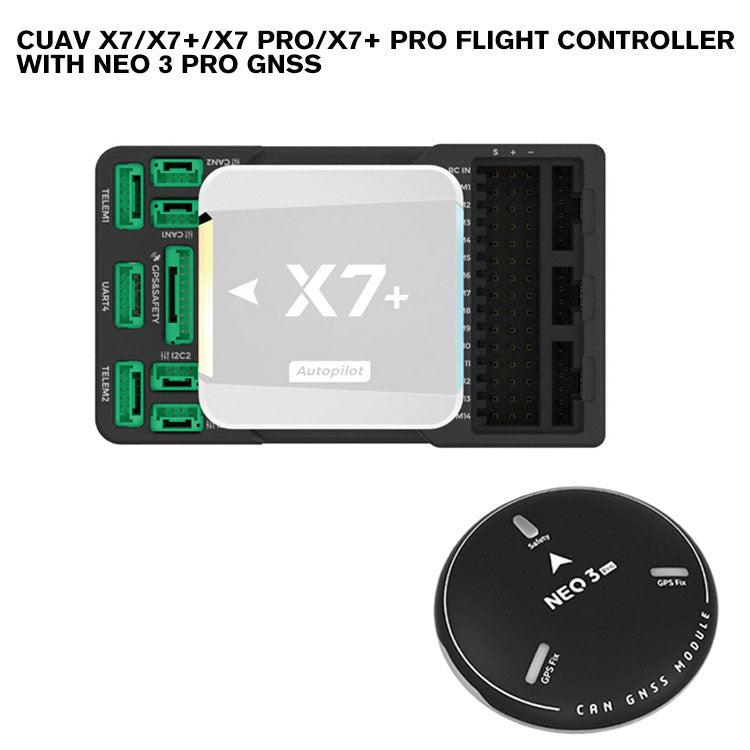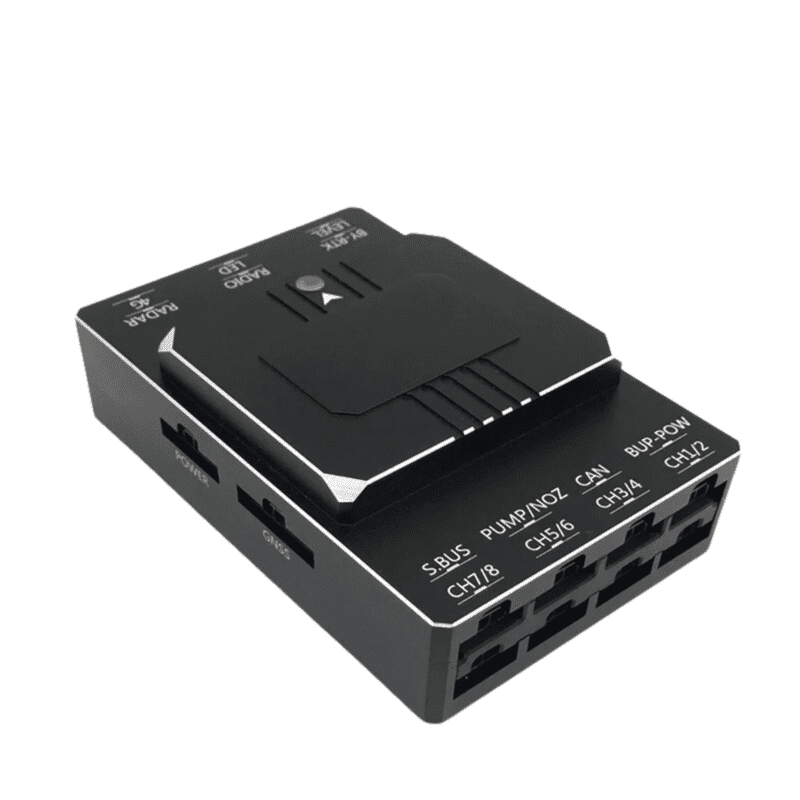Enhance Drone Performance with SparkNavi Drone Flight Controller and GNSS/INS Made in Taiwan
Enhance Drone Performance with SparkNavi Drone Flight Controller and GNSS/INS Made in Taiwan
Blog Article
The Importance of Drone Trip Controllers in Modern Aerial Innovation: Key Components and Their Impact
In the realm of modern airborne modern technology, drone trip controllers offer as the critical systems that orchestrate a drone's efficiency and capacities. As markets progressively count on drones for applications ranging from agriculture to surveillance, the developing modern technology within trip controllers raises important inquiries regarding their future influence and possible innovations.

Summary of Drone Flight Controllers
In the world of aerial technology, drone flight controllers offer as the vital brain of unmanned aerial automobiles (UAVs), enabling specific ability to move and stability during trip. These innovative systems incorporate sensor data, refining formulas, and control inputs, permitting drones to implement complex trip patterns with precision.
Drone trip controllers make use of numerous sensors, such as gyroscopes, accelerometers, and GPS modules, to examine the UAV's alignment and position in real-time. This info is important for keeping balance and making certain secure operation in diverse ecological problems. The controllers process this data to make rapid adjustments to the drone's electric motors, enabling smooth shifts and responsive handling.
Furthermore, trip controllers are geared up with advanced software program that supports features such as waypoint navigating, challenge avoidance, and autonomous trip capacities. This software program is vital for both business and leisure applications, where dependability and precision are vital. As drone innovation continues to advance, the development of flight controllers will play a pivotal duty in enhancing UAV safety and security, adaptability, and functionality, inevitably broadening their applications throughout different sectors.
Trick Elements Explained
Recognizing the essential parts of drone trip controllers is crucial for grasping just how these systems run effectively. At the heart of a flight controller is the microcontroller, which works as the brain, processing data from various sensing units and performing commands. Necessary sensing units consist of gyroscopes and accelerometers, which measure the drone's positioning and movement, giving vital feedback for stablizing.
One more trick part is the measure, which assesses elevation by measuring atmospheric pressure, while general practitioner components provide positional information, making it possible for self-governing navigating - SparkNavi drone flight controller and GNSS/INS made in taiwan. The flight controller also interfaces with Electronic Rate Controllers (ESCs), which regulate the rate of the drone's electric motors based on the controller's commands
Interaction components, such as radio receivers, facilitate push-button control input, permitting operators to send commands in real-time. Additionally, some trip controllers incorporate software application that can deal with complex algorithms for waypoint navigating, trip planning, and telemetry information analysis.
Function in Trip Security
Central to keeping trip stability, drone trip controllers make use of advanced algorithms to refine sensor data and make real-time adjustments. These controllers are outfitted with an array of sensing units, consisting of accelerometers, measures, and gyroscopes, which continuously keep track of the drone's altitude, rate, and positioning. By analyzing this information, the flight controller can recognize deviations from the wanted trip path and react without delay to preserve security.
For circumstances, if a drone experiences an unexpected gust of wind, the flight controller can promptly readjust the motor speeds to combat the disruption, guaranteeing a consistent flight trajectory. This ability is crucial not just for manual flight operations yet additionally for performing complex maneuvers and keeping smooth trip in various ecological conditions.
.png)
Moreover, the sophisticated algorithms made use of in trip controllers, such as PID (Proportional-Integral-Derivative) control, allow for fine-tuning of the drone's action to modifications in trip problems. By enhancing these control criteria, flight controllers can improve security, enhance responsiveness, and minimize pilot work. Eventually, the function of trip controllers in making sure trip stability is essential for the effective and safe procedure of modern drones across varied applications.
Influence On Autonomous Workflow

Independent procedures are particularly critical in diverse applications such as shipment, agriculture, and monitoring services. With enhanced trip controllers, drones can autonomously browse established routes, efficiently gather information, and adjust to dynamic atmospheres. This capacity lowers the need for constant human oversight, consequently boosting operational efficiency and safety.
Furthermore, the implementation of device learning methods within trip controllers enables drones to boost their efficiency over time by discovering from previous objectives. This versatility leads the way for a lot more innovative independent applications, such as throng modern technology, where multiple drones coordinate their actions to accomplish a typical objective.
Future Trends in Trip Controllers
Technologies in flight controller technology are positioned to change drone abilities in the coming years. One substantial pattern is the integration of expert system (AI) and device understanding algorithms, enabling drones to learn from their atmospheres and make real-time decisions. This innovation will enhance independent navigation, challenge avoidance, and objective planning, substantially improving functional performance and safety and security.
In addition, the development of innovative sensor technologies, such as LiDAR and multispectral imaging, will give trip controllers with richer information inputs. This will certainly promote extra advanced logical capacities, enabling drones to carry out useful source complicated tasks, such as precision rescue, search and farming, and infrastructure evaluations with unprecedented precision.
Another arising pattern is the miniaturization of flight controller elements, which will certainly lead to lighter and more portable drones. This evolution will certainly expand trip periods and haul capabilities, making drones much more versatile for various applications.
Final Thought
To conclude, drone flight controllers function as vital parts in contemporary aerial modern technology, making sure stability and accuracy in maneuverability via the combination of microcontrollers, accelerometers, and GPS components. SparkNavi drone flight controller and GNSS/INS made in taiwan. Their capacity to allow independent procedures and adjust to different applications underscores their value throughout multiple sectors. As advancements in fabricated intelligence and sensing unit innovation remain to arise, the possibility for improved abilities and improved operational effectiveness in drone systems will likely reshape the future of aerial applications
Central to preserving trip stability, drone flight controllers utilize advanced algorithms to refine sensor information and make real-time changes. By analyzing this information, the flight controller can recognize discrepancies from the preferred flight course and respond promptly to maintain stability.
Furthermore, the innovative formulas go used in trip controllers, such as PID (Proportional-Integral-Derivative) control, allow for fine-tuning of the drone's feedback to adjustments in flight conditions. Ultimately, the role of flight controllers in ensuring flight stability is essential for the reliable and risk-free operation of modern drones across diverse applications.
The improvements in drone trip controllers not just boost flight security however likewise considerably affect self-governing procedures. SparkNavi drone flight controller and GNSS/INS made in taiwan.
Report this page